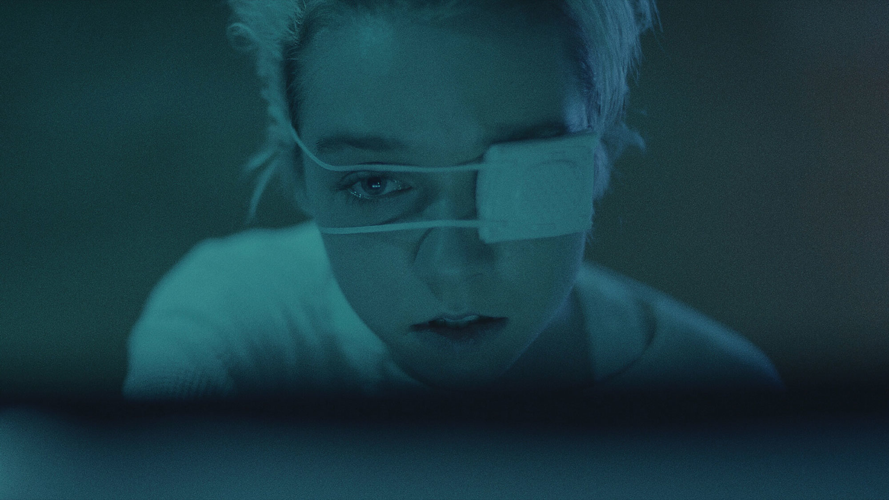
Come True
It’s been a tightrope as of late. On one side, we’ve got improving vaccination rates and a sense that some folks are trying. On the other, we’ve got more of the things that define Nashville being sold off for development. I don’t know what to tell you. It’s all chaotic and sad and feels emotionally empty. But there are still some great film options, thankfully. See this week’s recommended titles below, and as always, look back at past issues of the Scene for more suggestions of what to watch: March 26, April 2, April 9, April 16, April 23, April 30, May 7, May 14, May 21, May 28, June 4, June 11, June 18, June 25, July 2, July 9, July 16, July 23, July 30, Aug. 6, Aug. 13, Aug. 20, Aug. 27, Sept. 3, Sept. 10, Sept. 17, Sept. 24, Oct. 1, Oct. 15, Oct. 29, Nov. 5, Nov. 11, Nov. 26, Dec. 3, Dec. 17, Jan. 6, Jan. 21, Jan. 28, Feb. 4, Feb. 11, Feb. 18, Feb. 25, March 11, March 18, March 25, April 1, April 8.
Come True via Video on Demand
I wasn’t ready for it. Sometimes, a film has to lure you in as a viewer, like one of those plants that patiently awaits a fly, or tiny mouse, or unexpecting tourist, and then all of a sudden you’re caught and already being digested. Come True is like that. A defiantly Canadian night swim into the depths of the human mind, this movie has elements of Beyond the Black Rainbow, A Nightmare on Elm Street 3, Altered States and The Beyond swirling about in the mix. But writer-director Anthony Scott Burns has made something that doesn’t feel exactly like anything else. Come True follows Sarah (Julia Stone), a teen on the streets but still going to school, timing occasional returns to her parents’ home so that they never quite speak, sleeping on playgrounds or at friends’ homes, and always moving forward. When Sarah finds herself in a university sleep study, it’s the perfect solution to all her problems — until something happens when she’s sleeping. And there’s a mystery just across the threshold of consciousness that threatens the very fabric of life itself.
This is a slow-burn film that is not afraid to get weird, or to follow a questionable choice through to its very end. There are lots of different kinds of experiences that art can inspire, but it’s rare for something to be able to terrify you completely as easily as it slaps you across the face with something nearly ludicrous. If Come True had done nothing other than taking a sex scene of Munich-level ridiculousness and making it into something so conceptually terrifying that you have to change the angle of the laptop screen to reaffirm the boundaries of The Real, it would be one of the essential fantasy-terror films of the millennium. But there’s more, including a whole visual philosophy to mapping dreamscapes that becomes reassuring and unspeakably terrifying with each journey through its beautifully rendered spaces. Also, points for its synth-gaze score, Landon Liboiron’s performance (he was the Romani werewolf on Hemlock Grove, which I watched all three seasons of so you don’t have to) and a unified theory of nightmares. As far as rewatch value, this is right up there with The Empty Man, lurking in the subconscious to wreak havoc.

Critters 2
Critters 2: The Main Course on HBO Max
The recent holiday got me thinking. Every Easter, there’s a lot of dithering about the best horror film to watch. You can get metaphysical and go with Donnie Darko or The Last Temptation of Christ, or chronoskim back to the pagan roots with The Wicker Man. There’s ’70s classic Night of the Lepus, in which giant rabbits go on a rampage. (Though I think some actual rabbits died in the making of that one, so that’s a totally legitimate reason to avoid it.) You can travel further with the egg motif with Alien, its Italian ripoff Contamination or the sadly hard-to-find The Kindred (a film that illustrates the necessity of checking every watermelon for tentacle monsters). There are even a few offerings of murderous Easter Bunnies (guy in suit variety). But the best Easter horror film is Mick Garris’ Critters 2: The Main Course. Part of it is because it’s set on Easter weekend. Part of it is because it utilizes Easter egg hunts as a plot point. But it’s mostly because it actually engages with the concept of resurrection and rebirth by way of a Playboy centerfold who is somehow necessary to the plot. (It was the ’80s, and other than that I don’t know what to tell you.) You can use this information for Easter 2022, or on May 2 — which is Orthodox Easter and maybe a bit more conducive to you and your social circle’s vaccination schedule. Featuring Broadway legend Terrence Mann!






